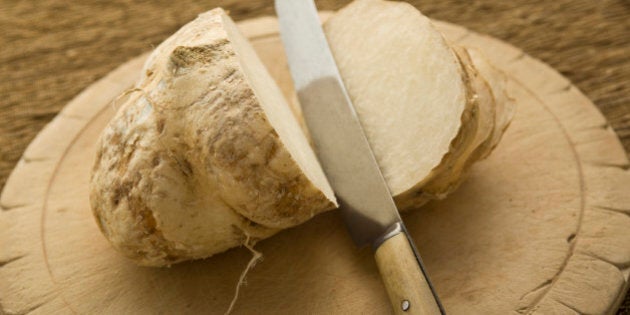
This slightly sweet and crunchy root vegetable may lack the marketing budgets of acai and coconut juice, but it acts as a prebiotic to promote "friendly" bacteria in the gut. Plus it may boost collagen and fight wrinkles.
Rich in vitamin C and minerals, jicama, also known as Mexican yam or water chestnut, can be cooked, mashed, or baked, or served raw in slaws, salads, and stir-fries, after you peel its thick skin.
While predictions are swirling that jicama will soon take an honorary place alongside carrots and kale, at this point you're still likely only to find the vegetable at farmers' markets or Mexican groceries.
Jicama, like Jerusalem artichokes, is a source of inulin, a prebiotic that can promote the growth of beneficial bacteria in the gut. Munching on jicama might also boost the look of your skin, thanks to its vitamin C content (one cup of raw jicama slices provides more than 24 mg of vitamin C). Eating vitamin C-rich foods can increase collagen production, which can help improve skin texture, speed wound healing, and give you a healthy glow.
Still, Livestrong warns that while jicama root is healthy and completely edible, the rest of the plant is toxic, including the seeds, leaves, and pods.
